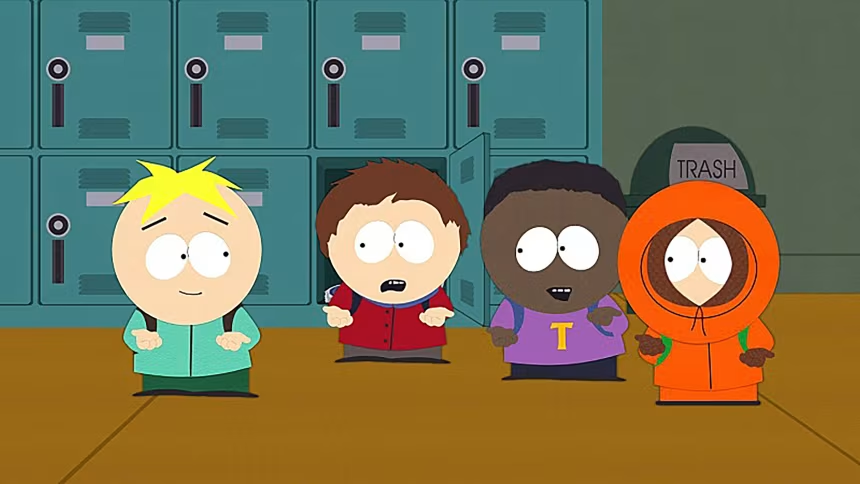A new viral craze is taking over school halls across the country, and it involves nothing more than two numbers: 6 and 7. Pronounced “six-seveeeen,” the phrase “6-7” has become the latest Gen Alpha nonsense phenomenon, leaving teachers both baffled and exasperated.
In classrooms from Sioux Falls, South Dakota, to suburban Ohio, students are shouting “6-7” at seemingly random moments—when a teacher flips to page 67, when lunchtime is six to seven minutes away, or just for the thrill of it. “It’s like a plague — a virus that has taken over these kids’ minds,” said Gabe Dannenbring, a seventh-grade science teacher in Sioux Falls. “You can’t say any iteration of the numbers 6 or 7 without at least 15 kids yelling, ‘6-7!’”
Unlike traditional jokes or memes, 6-7 has no setup, no punchline, and—technically—no meaning. Yet the appeal is social. For students, yelling 6-7 signals inclusion, a subtle nod that they are part of a shared, “in-the-know” peer group. “It becomes a language game to them that, it would seem, only folks in their group know how to play,” said Gail Fairhurst, a University of Cincinnati professor who studies communication and generational slang.
The Origins of 6-7 (Kind Of)
Tracing the exact origin of 6-7 is tricky—likely because kids don’t really care. Linguist Taylor Jones suggests the phrase may have initially appeared in the viral song Doot Doot (6 7) by Philadelphia rapper Skrilla. In Skrilla’s track, 6-7 is believed to reference the police code 10-67, used for reporting a death.
In December 2024, high school basketball standout Taylen Kinney added a hand gesture to accompany the phrase, first showcased in a TikTok where he rated a Starbucks drink “6 … 6 … 6-7” while weighing the options between his palms. Kinney’s TikTok account, which has over a million followers, helped the gesture and phrase go viral.
Sports highlight reels soon picked it up. Charlotte Hornets point guard LaMelo Ball, who is 6 feet, 7 inches tall, has unwittingly been part of the meme’s momentum, though the NBA star hasn’t publicly commented on it. Meanwhile, amateur basketball fans contributed to the trend, including a now-iconic clip of a young spectator shouting “6-7!” during a game. Online, the boy became known as Mason, or “Mason 67,” adding another layer to the growing meme universe.
Why Kids Can’t Stop Yelling 6-7
Experts say the number’s appeal is rooted in “semantic bleaching,” a linguistic term describing a phrase divorced from its original context, now carrying meaning only to those using it. “Do you have a little bit of whimsy? Or are you a party pooper?” said Jones. In other words, kids scream 6-7 because it’s fun—and fun is inherently social.
“It’s a shibboleth,” Jones continued—a word or phrase that signals belonging. “Language is a way for people to form community,” said Fairhurst. “Even if it’s a nonsense term, if someone seems to understand it, that can be a unifying force. And if somebody doesn’t understand it, they’re excluded.”
Unlike previous nonsense trends such as “Skibidi” or “rizz,” 6-7 has persisted, partly because adults have reacted so strongly to it. Teachers nationwide report being driven to distraction, with Dannenbring citing a personal record of hearing it 75 times in a single school day. Some have even banned it, while others try creative strategies to incorporate it into lessons to reduce disruption.
Teachers Fighting Back—and Failing?
In Michigan, a middle school choir teacher turned the phrase into part of a warm-up song, blending “6-7” with other trending words like “slay” and “rizz,” creating a chorus that partially tames its disruptive power. Dannenbring, a 27-year-old teacher, uses humor and intentional misuse—saying phrases like “That’s so 6-7 of you”—to regain classroom control.
Comedian Josh Pray, in videos with his own children, has attempted to reclaim the number from Gen Alpha, humorously warning, “I’ll be 67 before they know it, and I don’t want to hear that tone all around me as a taunt to my age!”
Not a Threat to Literacy or Critical Thinking
Despite headlines proclaiming “kids’ brains are rotting,” Jones warns parents not to panic. “Concerns about literacy and critical thinking are legitimate, but they’re being projected onto normal, youthful behavior,” he said. Each generation develops its own slang, and adults have always struggled to understand it. The absurdity of 6-7 is nothing new in historical context, even if the meme spreads faster thanks to social media.
Some students have already begun rolling their eyes, and teachers report early signs of replacement phrases, like “41,” attempting to dethrone 6-7 as the schoolyard’s favorite meaningless number. But, as Dannenbring notes, past fads have been far more destructive—students have set school laptops on fire or ripped sinks off walls in response to trends. Compared to those, 6-7 is relatively harmless.
Ultimately, the 6-7 phenomenon reflects not brain rot but the playful, inventive nature of youth. In a post-truth digital era, the popularity of a meaningless number demonstrates how interpretation and shared culture often matter more than literal meaning. For now, classrooms across the U.S. remain under siege—by nothing more dangerous than a number.

